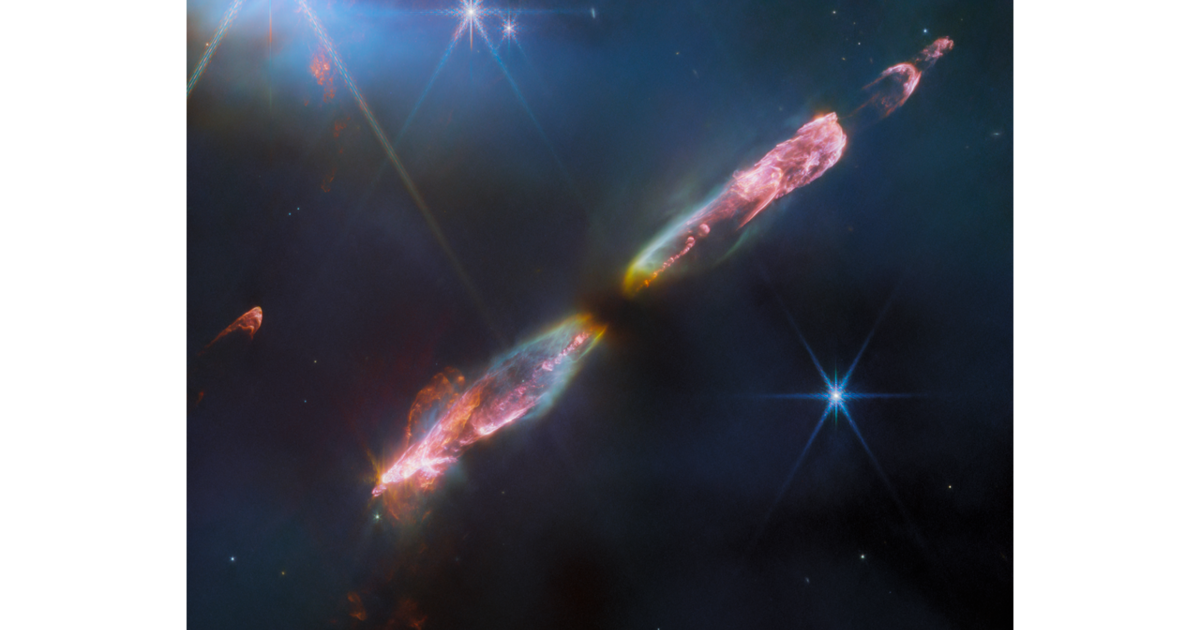

Unprecedented Webb Image Reveals Supersonic Outflow from a Newborn Star The James Webb Space Telescope (JWST) has captured a breathtaking and unprecedented image of a newborn star, revealing a dramatic outflow of material moving at supersonic speeds. This stunning observation offers a new level of detail in understanding the chaotic and energetic processes involved in stellar formation. The image, unlike anything seen before, showcases intricate structures within the outflow, providing invaluable data for astronomers studying the earliest stages of a star's life. Previous telescopes have hinted at these outflows, but the JWST's infrared capabilities, coupled with its unparalleled resolution, have allowed for a groundbreaking level of clarity. The image shows a complex network of jets and shocks emanating from the protostar, revealing a previously unseen level of intricacy in the interaction between the stellar wind and the surrounding molecular cloud. The supersonic speeds of this outflow are evident in the sharp, well-defined bow shocks visible in the image – regions where the stellar wind collides with the ambient gas and dust, creating compressed regions of high temperature and density. This detailed view allows astronomers to analyze the composition and dynamics of the outflow with unprecedented precision. By studying the distribution of different molecules and the velocity of the outflow, researchers can gain valuable insights into the mass loss rate of the protostar and the mechanisms that regulate its growth. Understanding these processes is crucial for building comprehensive models of star formation and for predicting the properties of stars across a range of masses. Furthermore, the JWST's observation highlights the importance of studying these young stellar objects in the infrared. Much of the crucial information about the outflow is obscured by dust at visible wavelengths, rendering the details invisible to optical telescopes. The infrared light penetrates the dust, allowing JWST to reveal the hidden processes shaping the birth of a star. The unprecedented detail in this image represents a significant advancement in our understanding of star formation. The data collected will be meticulously analyzed over the coming months and years, promising further breakthroughs in our comprehension of the complex interplay of forces that govern the birth and evolution of stars in the universe. This is just one example of how JWST is revolutionizing our view of the cosmos, providing insights into celestial phenomena that were previously beyond our reach.

An otherworldly image captured by the powerful shows the outflows surrounding a fast-moving newborn star that will someday grow into a cosmic body like the sun.
The image shows the star and the Herbig-Haro objects surrounding it. Herbig-Haro objects are "luminous regions" that appear around newborn stars and are formed when stellar winds or jets of gas form shock waves that collide with nearby gas and dust particles at high speed, Thursday.
The image shows a series of shocks to the southeast and northwest (the lower-left and upper-right areas of the image) that look like colorful plumes extending in either direction.
The photo is "roughly 5 to 10 times higher spatial resolution" than any previous image of the star and the objects, NASA said.
According to earlier observations of the star and the shocks, the shocks are both moving away from and towards Earth. The lower-left plume is moving towards our planet, NASA said. However, the shocks are moving "relatively slow in comparison to more evolved" types of the same star.
The star is an "infantaile analog" of the galaxy's sun, NASA said. In other words, it resembles the sun when it was "no more than a few tens of thousands of years old." Right now, the star's mass is only 8% that of the present-day sun.
The photo was captured with infrared imaging, which is used to study newborn stars and outflows and able to see through the gas of molecular clouds in which stars form. Molecules within the star and outflows emit infrared light, which Webb can use to map a structure.





